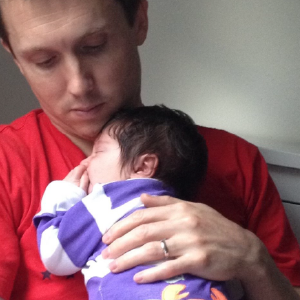 For the last 102 years, the Women’s Bureau has been the only federal agency mandated by Congress to represent the interests and needs of wage-earning women. As such, we understandably focus primarily on women, but recognize that true equality requires addressing the gender care gap as much as the gender wage gap.
For the last 102 years, the Women’s Bureau has been the only federal agency mandated by Congress to represent the interests and needs of wage-earning women. As such, we understandably focus primarily on women, but recognize that true equality requires addressing the gender care gap as much as the gender wage gap.
Longstanding gender stereotypes perpetuate the notion that men work for pay outside the home in order to provide financially for their families, while women assume responsibility for the majority of unpaid household work. While this does not reflect the reality of most families’ lives, the impact of these norms persists.
Mothers of young children have the lowest labor force participation rates, while fathers of young children have the highest. And employed mothers of young children are less likely to work full-time (77.2%) than other mothers (81.2%) and much less likely than fathers of young children (95.3%). Data also shows that in different sex married couple families with children where the mother and father both work full-time, on average mothers spend more time on almost every household activity than fathers. This includes 50% more time caregiving and almost three times as long performing housework on an average day.
This gender gap in caregiving did not occur in a vacuum. Gendered stereotypes and cultural expectations concretized these roles, and they are often reinforced – subtly or not so subtly – through our public policies. Right now, most workers do not have access to paid leave, and the Family Medical Leave Act only offers some workers job protection to take unpaid leave. Yet, while men and women take parental leaves at roughly the same rate, women take significantly longer leaves than men. But this prevailing parental work-life setup does not reflect what fathers want. Three out of 4 fathers say both parents should equally share the work of caring for babies, and almost 9 out of 10 fathers and mothers agree that household caregiving should be equally divided.
Unfortunately, the uniquely American lack of parental supports reinforces our gendered care setup. We need and deserve good, gender-neutral policies to help support working fathers’ involvement in family care. I experienced this firsthand as a first-time father in 2016. Federal government workers, like 86% of workers at the time, did not have access to paid family leave. I had access to paid leave through my accrued annual leave but could not use any sick leave to care or bond with my newborn. And I had job protection for up to 12 weeks under FMLA, which is intentionally gender neutral. However, that leave is unpaid, making it difficult to fully use when time away from work is necessary but family expenses are increasing.
I had a very supportive work culture, but given my family’s need for income and the reality that we needed to preserve paid leave for the upcoming year full of doctor visits and daycare illnesses, I took half as much leave as my wife and returned to work 6 weeks prior to my child starting daycare.
Despite my preferences and intentions, I fell into the cultural expectation of fatherhood – financial provider over care provider. I missed out on smiles, snuggles, naps and tummy time. Perhaps more significantly, my absence put a greater burden on my wife because I wasn’t around to help change diapers, do laundry, prep food or any of the hundreds of other tasks involved in caring for a newborn. This is the situation for far too many mothers, who end up shouldering additional caregiving responsibilities. As frustrating as our situation was, we had full-time jobs with savings and both working parents were able to at least take some time off, making us far luckier than most working parents.
Our work at the Women’s Bureau focuses on the ways current gendered caregiving patterns limit opportunities for mothers, especially in relation to their earnings and economic security. But it is equally true that fathers are losing something, too. The lack of access to meaningful caregiving supports – for parents and caregivers of any gender – means that they often report wanting to do more in their parental roles. Fathers are about as likely as mothers to report that being a parent is extremely important to their identity and are more likely than mothers to report not being able to spend as much time as they want with their kids.
Fortunately for myself and other federal workers, we no longer face the same constraints when it comes to caring for a new child. Beginning in 2020, the Federal Employee Paid Leave Act grants up to 12 work weeks of paid parental leave for a qualifying birth or placement of a child for adoption or foster care. All workers, mothers, fathers and children deserve programs like FEPLA. So this Father’s Day – and after – let’s work to increase gender-neutral family-supportive policies and close the gender care gap.
Mark deWolf is a senior economist in the Women’s Bureau. Follow the bureau on Twitter @WB_DOL.

 U.S. Department of Labor Blog
U.S. Department of Labor Blog